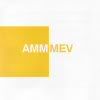
9.5.05
 Musica Elettronica Viva, ideia criadora de sons. Menos uma formação estável e de geometria única, que um movimento à volta da improvisação electrónica primordial. Do final dos anos 60 para o início da década seguinte, o MEV, sigla por que é talvez mais (?) conhecido, sofria três diferentes mutações, com epicentros diferenciados: Nova Iorque, Paris e Roma. Por coincidência, todas capitais da moda.
Musica Elettronica Viva, ideia criadora de sons. Menos uma formação estável e de geometria única, que um movimento à volta da improvisação electrónica primordial. Do final dos anos 60 para o início da década seguinte, o MEV, sigla por que é talvez mais (?) conhecido, sofria três diferentes mutações, com epicentros diferenciados: Nova Iorque, Paris e Roma. Por coincidência, todas capitais da moda.Em Nova Iorque, Richard Teitelbaum e Frederic Rzewski experimentavam intensamente com a electrónica; em Paris, Patricia e Ivan Coaquette lideravam os acontecimentos; e em Roma, Alvin Curran dava sequência a outras manifestações do mesmo crer sonoro. Por lá passaram Constance Abernathy, Michel Asso, Bert, Michael Blake, Barbara Bryant, Carius, Franco Cataldi, Ivan e Patricia Coaquette, Alvin Curran, Chaia Gerstein, Jeff Levine, Jean-Marie Poiret, Frédéric e Nicole Rzewski, Richard Teitelbaum.
A partir deLondres, Cornelius Cardew, Lou Gare, Christopher Hobbs, John Tilbury, Eddie Prevost e Keith Rowe: AMM. Data de 1968 a primeira edição discográfica conjunta destes dois grupos de pioneiros da música electrónica livremente improvisada: Live Electronic Music Improvised (Mainstream).
O resto é história, que se conta em inúmeros concertos e discos gravados e publicados em vários selos discográficos.
A Matchless Recordings edita agora mais uma reunião histórica do MEV e do AMM, numa produção de Eddie Prevóst. Com ele, Alvin Curran, Keith Rowe, Frederic Rzewski, Richard Teitelbaum e John Tilbury.
O primeiro dos dois discos inclui uma gravação conjunta dos seis músicos do Eletttronica Viva e do AMM, realizada em 30 de Abril de 2004.
O segundo CD retrata duas performances em separado dos dois grupos no festival londrino «Freedom of the City», no Primeiro de Maio de 2004.
After the generally low dynamic levels and relatively slow pace of the AMM trio set on 1 May, the MEV trio opened with the blast of Alvin Curran playing the sho far, a trumpet made from a ram's horn, a 'defiantly primitive', prototypical music, fit to leave the walls of the Conway Hall, like some new Jericho, pitched down fiat. If I spoke earlier of the way in which AMM might deal, in Reeve and Kerridge's phrase, with the internal, microscopically-enlarged body surface which becomes a landscape -- and the same is true of some of Teitelbaum and Curran's quieter use of radically pitch-shifted and extended samples -- particularly that ululating operatic-theatrical voice, coming to sound almost like something from AMM's label-mates FURl -- then this is the extrovert mode, which refuses any easy accommodations. Which division is inherent; as Bourdieu explains, the culture which unifies via the medium of communication is also the culture which separates via the culture of distinction, and which legitimates distinctions. It may be, as Adorno remarks, that a work of art is great insofar as it registers a failed attempt to reconcile such objective antinomies; failure then being in the highest sense the measure of success. - Harry Gilonis.

>

